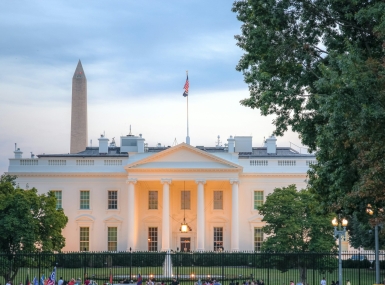NTIA releases new guidance on BEAD program funding rules
Author

Seamus Dowdall

Emma Conover
Upcoming Events
Related News

Key Takeaways
On June 6, the National Telecommunications and Information Administration (NTIA) released a Policy Notice modifying the requirements outlined in the Broadband Equity Access Deployment (BEAD) Notice of Funding Opportunity (NOFO). The modifications are effective immediately, and state broadband offices are required to revise their Initial Proposals to comport with the new guidance no later than July 6 2025. Additionally, all state broadband offices must issue a new “Benefit of the Bargain” subgrantee application process, regardless of whether they received prior approvals or not.
The BEAD program was authorized and appropriated under the Bipartisan Infrastructure Law (BIL) to provide $42.45 billion in funding for the deployment of last-mile broadband connectivity to every unserved and underserved household and business across the country. States are the primary grantees of these funds, with local governments, internet service providers, cooperatives or other providers able to function as subgrantees.
What changes have been made to BEAD requirements?
The June 6 Policy Notice modifies the requirements outlined in the initial BEAD Notice of Funding Opportunity, making the following changes:
- Changes the end-to-end fiber preference for broadband projects from the original BEAD NOFO, pivoting to a technology neutral approach that prioritizes the lowest cost option
- Establishes a new “Benefit of the Bargain” subgrantee selection round for every BEAD- eligible location, including states who have already completed the subgrantee selection
- Eliminates non-statutory requirements related to labor, employment, and workforce development
- Eliminates requirements related to climate change and climate resilience, but maintains that subgrantees establish risk management plans that account for potential service disruptions by natural disasters and cyber attacks
- Eliminates the non-statutory requirements related to open access and net-neutrality
- Eliminates the previous requirements that favored non-traditional broadband providers, such as municipalities, over traditional providers
- Eliminates the Middle-Class Affordability Plan and modifies the Low-Cost Service Option (LCSO). Subgrantees must still provide one LCSO, but prohibits states from setting rates under existing federal law
States will have 90 days to comply with the notice, submit altered Initial Proposals, and then conduct a new Benefit of the Bargain round. On July 2, the NTIA released new Frequently Asked Questions for the BEAD program.
How does this impact counties?
NACo strongly urges all members to closely coordinate with their respective state broadband offices to the greatest extent possible and follow new guidance issued by state broadband offices.
Resource
BEAD Program Toolkit for Counties

Related News

House committee passes local broadband permitting preemption bills
The American Broadband Deployment Act of 2025 would enact new restrictions on a variety of state and local land use and zoning authorities pertaining to the deployment of telecommunications infrastructure.

White House signs Executive Order on state AI lawmaking
President Trump signed an Executive Order (EO) aimed at mobilizing federal agencies to challenge existing state laws on artificial intelligence.
